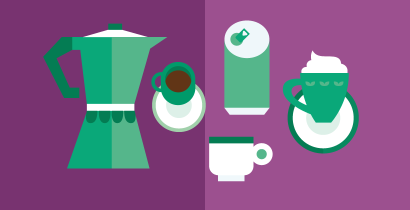Search results for sleep.
Healthy eating
Found in Category landing pages 15 December 2016…is most effective if accompanied by good hydration, sufficient sleep, and enough physical activity.
Tips
Found in Category landing pages 23 January 2017…plays a role in health as a good night’s sleep and the timing of meals can predict weight loss effectiveness. Starting small and developing a better relationship with food overall is an effective way to achieve good health for the long term.
Caffeine (Q&A)
Found in Whats in food 08 December 2016Caffeine is a naturally-occurring substance found in some plant-based food and drink ingredients, such as tea leaves and coffee or cocoa beans (and therefore chocolate). It is added to other food and drink products like cola-based soft drinks…
